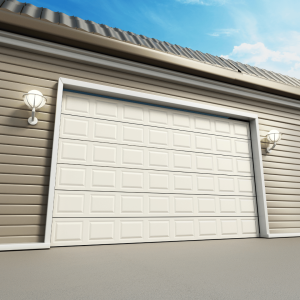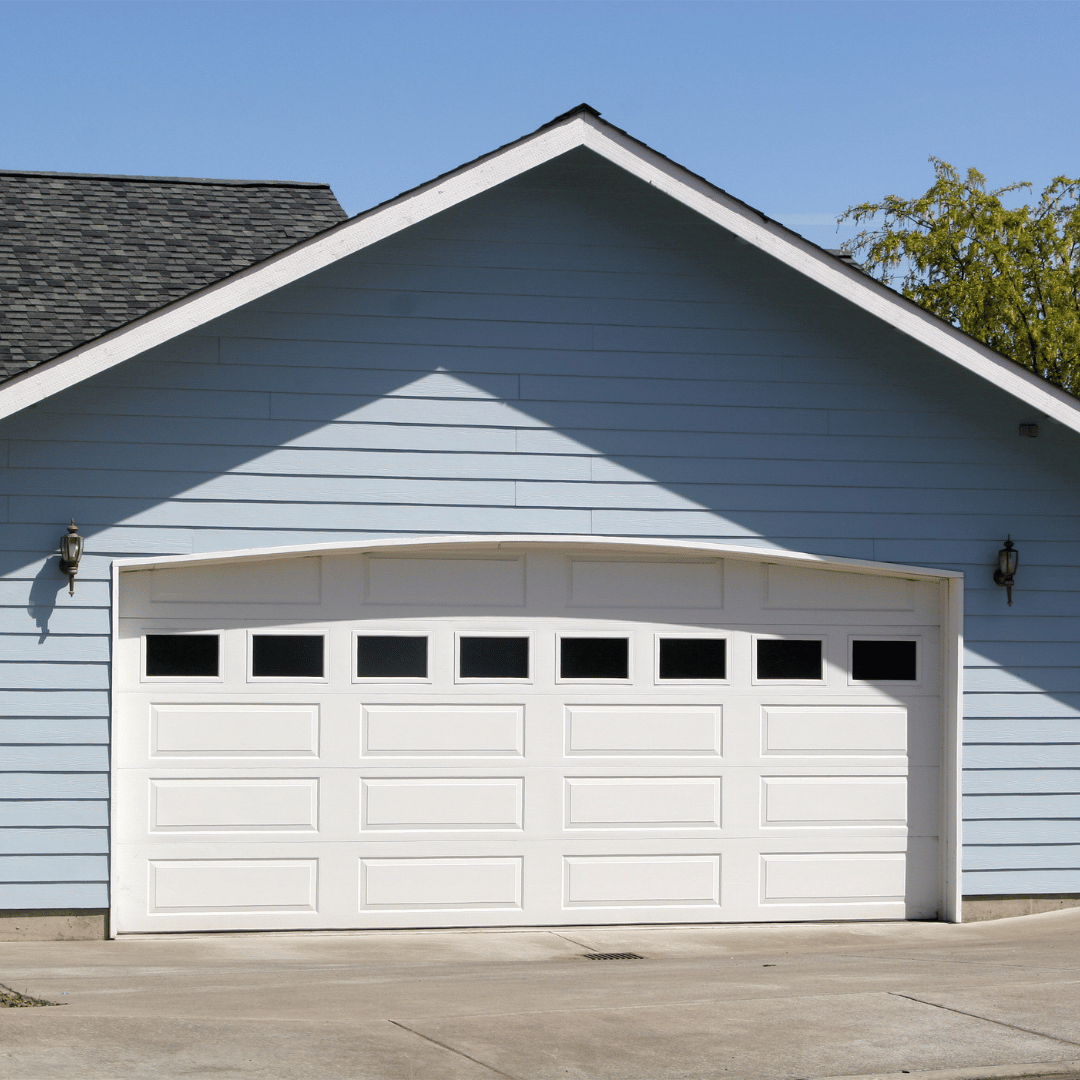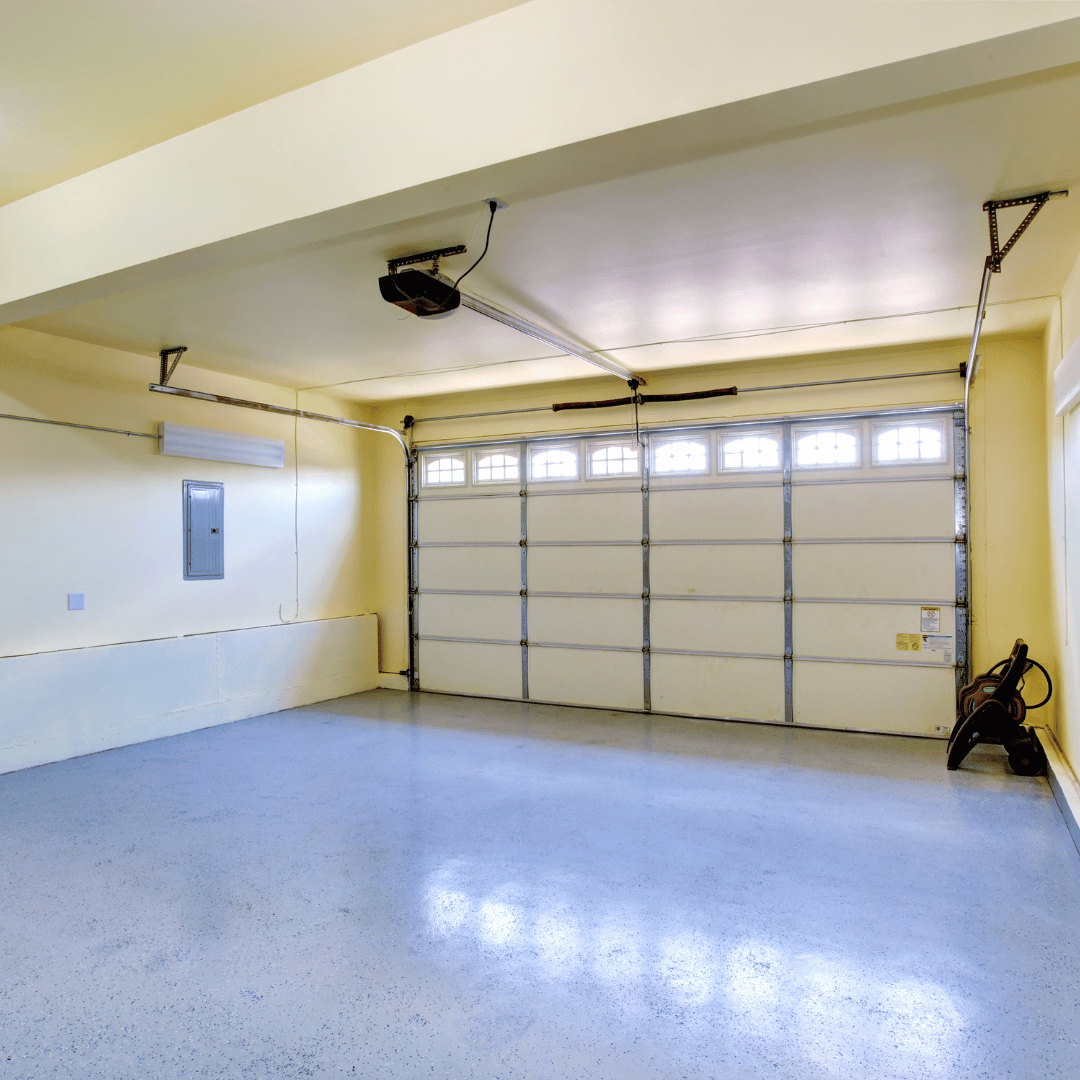
Troubleshooting a Garage Door That Has No Power
A garage door that suddenly loses power can be a major inconvenience, disrupting your daily routine and leaving your home less secure. Understanding how to diagnose and fix this issue is essential for maintaining the functionality and safety of your home. This article will guide you through the common causes of power loss in garage doors and provide practical solutions for troubleshooting the problem. Additionally, we’ll discuss how regular preventative home maintenance can help you avoid such issues in the future. Whether it’s resetting the power, checking for fuses, or manually operating the door, we’ll cover everything you need to know to get your garage door back on track.
How Do I Reset the Power on My Garage Door?
When your garage door has no power, resetting it can often restore its functionality. Here’s a step-by-step guide to help you troubleshoot and reset the power to your garage door opener:
- Locate the Power Source
- The power source for your garage door opener is typically a standard electrical outlet or a circuit breaker in your home’s electrical panel. Start by identifying where your garage door opener is plugged in or connected.
- Reset the Circuit Breaker
- One common reason for a loss of power is a tripped circuit breaker. To check this:
- Open your electrical panel and look for the breaker labeled for the garage door opener.
- If the breaker is in the OFF position or in a middle position, flip it to the OFF position and then back to the ON position. This will reset the breaker and may restore power to your garage door opener.
- One common reason for a loss of power is a tripped circuit breaker. To check this:
- Unplug and Replug
- If resetting the circuit breaker doesn’t resolve the issue, try unplugging the garage door opener:
- Disconnect the garage door opener from the electrical outlet.
- Wait for about 30 seconds to allow any residual power to dissipate and for the system to reset.
- Plug the garage door opener back into the outlet. This process can help clear any temporary electrical glitches and restore power to the system.
- If resetting the circuit breaker doesn’t resolve the issue, try unplugging the garage door opener:
- Check for Power
- Ensure that the garage door opener is receiving power:
- Test the electrical outlet by plugging in another device, such as a lamp or a phone charger. If the device works, the outlet is functioning correctly.
- If the outlet isn’t working, there may be an issue with the electrical circuit or wiring, and you may need to consult an electrician.
- Ensure that the garage door opener is receiving power:
By following these steps, you can often resolve power issues with your garage door opener. If the problem persists, further investigation may be needed to identify underlying issues. Regular preventative home maintenance can help ensure that your garage door and other home systems function smoothly, reducing the likelihood of unexpected power issues.
Is There a Fuse in a Garage Door Opener?
Most modern garage door openers do not use fuses; instead, they rely on circuit breakers for electrical protection. However, if you have an older model, it might still have a fuse. Here’s how you can determine if your garage door opener has a fuse and what to do if it does:
- Modern Garage Door Openers
- Most new garage door openers are equipped with internal circuit breakers rather than fuses. These circuit breakers are designed to automatically trip in the event of a power surge or electrical fault, protecting the opener from damage. If you’re dealing with a modern unit, focus on checking the circuit breaker as described in the previous section.
- Older Models
- For older garage door openers that may still have a fuse, follow these steps to check and replace it if needed:
- Refer to the User Manual: Start by consulting the user manual for your garage door opener. The manual will indicate whether your model includes a fuse and provide information on its location.
- Locate the Fuse: If your model has a fuse, it is typically found inside the garage door opener unit. To access it:
- Turn off the power to the garage door opener at the circuit breaker to ensure safety.
- Remove the cover of the garage door opener to access the internal components.
- Look for a small cylindrical fuse, which may be mounted in a fuse holder.
- Inspect and Replace the Fuse: Check the fuse for any signs of damage, such as a broken filament or discoloration.
- If the fuse is blown, replace it with a new one of the same type and rating. The rating should be specified in the user manual or on the fuse itself.
- Reassemble the garage door opener and restore power by flipping the circuit breaker back to the ON position.
- For older garage door openers that may still have a fuse, follow these steps to check and replace it if needed:
Checking for and replacing a fuse, if applicable, can resolve issues related to power loss in older garage door openers. For modern units, focus on circuit breaker troubleshooting. Regular preventative home maintenance practices, such as periodic checks of your garage door system, can help ensure that your opener remains in good working order and reduce the likelihood of encountering electrical issues.
Why Is My Electric Garage Door Not Working?
When an electric garage door isn’t working, several factors might be at play. Identifying the cause can help you resolve the issue efficiently. Here are some common reasons why your electric garage door may not be functioning and steps to troubleshoot each issue:
- Power Supply Issues
- Circuit Breaker: The most common cause is a tripped circuit breaker. Check your home’s electrical panel and ensure the breaker for the garage door opener is in the ON position. Reset it if necessary.
- Electrical Outlet: Verify that the outlet where the garage door opener is plugged in is working. Test the outlet with another device, like a lamp or phone charger. If the outlet is faulty, you may need to contact an electrician.
- Remote Control Problems
- Battery Replacement: Dead or weak batteries in the remote control can prevent the garage door from operating. Replace the batteries with fresh ones and try operating the door again.
- Signal Interference: Ensure there are no obstructions or sources of interference between the remote control and the garage door opener. Sometimes, electrical appliances or other electronic devices can interfere with the signal.
- Mechanical Failures
- Chain or Belt Disconnection: The chain or belt that drives the garage door might be disconnected or damaged. Inspect the drive mechanism for any signs of disconnection or wear.
- Track Alignment: Misaligned tracks can prevent the garage door from moving smoothly. Check the tracks for any bends or obstructions and realign them if necessary.
- Photo Eye Sensors
- Clean Sensors: Garage doors have photo eye sensors that prevent the door from closing if there’s an obstruction. Dirt or debris on the sensors can interfere with their operation. Clean the lenses of the sensors with a soft, dry cloth.
- Check Alignment: Ensure that the sensors are aligned correctly. They should face each other directly without any angle. Misalignment can prevent the door from operating.
By troubleshooting these common issues, you can often identify and resolve problems with your electric garage door. If the problem persists, it may require professional attention. Regular preventative home maintenance can help you keep your garage door and other home systems in good working order, minimizing the likelihood of unexpected failures.
How to Open a Garage Door When There Is No Electricity
If you find yourself in a situation where your garage door opener has no power and you need to access your garage, you can manually open the door. Here’s a step-by-step guide to help you get the job done safely:
- Locate the Manual Release
- Find the Release Cord: Inside the garage, look for a red cord hanging from the garage door opener unit. This is the manual release cord.
- Check the Door Position: Ensure that the garage door is fully closed before you attempt to disengage the opener.
- Disengage the Garage Door Opener
- Pull the Release Cord: Firmly pull the manual release cord downwards. This action disconnects the door from the opener mechanism, allowing you to operate it manually.
- Confirm Disengagement: Once the cord is pulled, you should be able to lift the door manually. If the door is still difficult to move, it may not be fully disengaged or there may be another issue.
- Lift the Door
- Manual Operation: Grasp the bottom of the garage door with both hands. Lift the door evenly and slowly to avoid any strain on the door springs or tracks.
- Secure the Door: Once the door is open, make sure it stays in place. Some garage doors have a locking mechanism that you can engage to keep the door open if needed.
- Close the Door
- Lower the Door: To close the door, gently lower it back to its closed position. Ensure that it’s fully closed and securely positioned.
- Re-engage the Opener: If power is restored, you will need to re-engage the garage door opener. Pull the manual release cord again to reconnect the door to the opener. You might need to cycle the door open and closed a couple of times to ensure proper alignment.
Understanding how to manually operate your garage door is crucial for emergency situations or when dealing with power outages. For long-term solutions, consider checking your home’s preventative home maintenance practices to ensure that your garage door system is in good working order and reduce the likelihood of power issues. Regular exterior home maintenance, including checking the garage door’s mechanical components, can help maintain its functionality.
Will a Garage Door Work Without Power?
When the power goes out, a garage door can still be operated manually, but its electric functions will be disabled. Understanding how your garage door can operate without power and what temporary solutions are available can help you manage these situations effectively. Here’s what you need to know:
- Manual Operation
- Manual Release: Most garage doors are equipped with a manual release feature that allows you to open and close the door manually when the power is out. This feature is activated by pulling the red release cord inside the garage, which disconnects the door from the electric opener.
- Lifting the Door: After disengaging the opener, you can lift the door manually. Ensure that the door is balanced and operates smoothly without causing strain on the door springs or tracks.
- Temporary Solutions
- Backup Power Options: Consider installing a battery backup system for your garage door opener. These systems are designed to provide power to the opener during electrical outages, allowing you to operate the door normally.
- Generator Power: If you have a generator, you can connect it to your garage door opener to restore power temporarily. Ensure that the generator is properly connected and that you follow all safety guidelines to avoid electrical hazards.
- Preventative Measures
- Regular Maintenance: Regular preventative home maintenance is crucial for ensuring that your garage door system remains functional and reliable. This includes checking and maintaining both the mechanical and electrical components of the garage door.
- Emergency Planning: Have a plan in place for power outages, including knowing how to manually operate your garage door and having backup power options available.
By understanding how to manually operate your garage door and exploring backup power solutions, you can effectively manage situations where your garage door is without power. Regular maintenance and planning can help ensure that your garage door functions properly and remains a reliable part of your home’s security system.
Incorporating Preventative Home Maintenance
Maintaining your garage door as part of your overall home maintenance strategy can help prevent issues like power failures and ensure smooth operation. Regular upkeep not only extends the life of your garage door but also reduces the likelihood of unexpected problems. Here’s how incorporating preventative home maintenance can benefit your garage door system and other areas of your home:
- Gutter Cleaning
- Why It Matters: Clean gutters help prevent water damage that could impact the garage and other parts of your home. Overflowing gutters can lead to water intrusion that affects your garage door tracks and mechanisms.
- How It Helps: Regular gutter cleaning ensures proper water flow and reduces the risk of water-related issues that might impact the structural integrity of your garage and its components.
- Pressure Washing
- Why It Matters: Pressure washing removes dirt, grime, and mildew from the exterior of your home, including the garage door. This not only improves the appearance but also helps maintain the door’s functionality.
- How It Helps: By keeping your garage door clean, you prevent buildup that could potentially interfere with the door’s operation or cause long-term damage.
- Window Washing
- Why It Matters: Clean windows contribute to overall home safety and aesthetics. For garages with windows, regular cleaning ensures clear visibility and prevents potential issues related to dirt and debris.
- How It Helps: Regular window washing keeps your garage area well-lit and free from obstructive grime, which can help you notice any potential problems with your garage door or its surroundings.
- Dryer Vent Cleaning
- Why It Matters: Lint buildup in dryer vents can pose a fire hazard and affect the overall airflow in your home. In some cases, poor ventilation can lead to increased humidity that might impact garage door mechanisms.
- How It Helps: Regular dryer vent cleaning reduces the risk of fire and ensures that your home’s ventilation system is functioning properly, which can indirectly benefit the environment around your garage door.
Incorporating these maintenance tasks into your regular home care routine helps keep your garage door in optimal condition and prevents common issues like power failures. By addressing these aspects of interior home maintenance and exterior home maintenance, you ensure a smoother operation of your garage door and contribute to the overall health and efficiency of your home. Regular attention to these areas minimizes the risk of unexpected problems and helps maintain the safety and functionality of your home.
Dealing with a garage door that has no power can be a frustrating experience, but understanding the common causes and solutions can help you manage the situation effectively. From resetting the power and checking for fuses to manually operating the door, knowing how to troubleshoot and address these issues ensures that you can handle emergencies and maintain the functionality of your garage door.
Incorporating regular preventative home maintenance practices, such as gutter cleaning, pressure washing, window washing, and dryer vent cleaning, can significantly reduce the likelihood of encountering power issues with your garage door. By keeping both the interior and exterior of your home well-maintained, you contribute to the overall efficiency and longevity of your garage door system.
Remember, a well-maintained garage door not only enhances the convenience and security of your home but also minimizes the risk of unexpected problems. If you find yourself facing persistent issues or need professional assistance, don’t hesitate to seek expert help from HomeSmiles. Regular upkeep and proactive care are key to ensuring that your garage door remains a reliable and smooth-operating part of your home.
- Protecting Your Property: Why the Right Cleaning Method Makes All the Difference
- The #1 Thing That’s Dulling Your Curb Appeal (And How to Fix It)
- How Maintenance Bundles Provide Peace of Mind for Busy Small Business Owners and Facility Managers
- Essential vs. Complete Home Packages: Choosing the Right Preventive Care for Your Property
- How a Simplified Service Model Benefits Both Homeowners and Franchisees Alike


